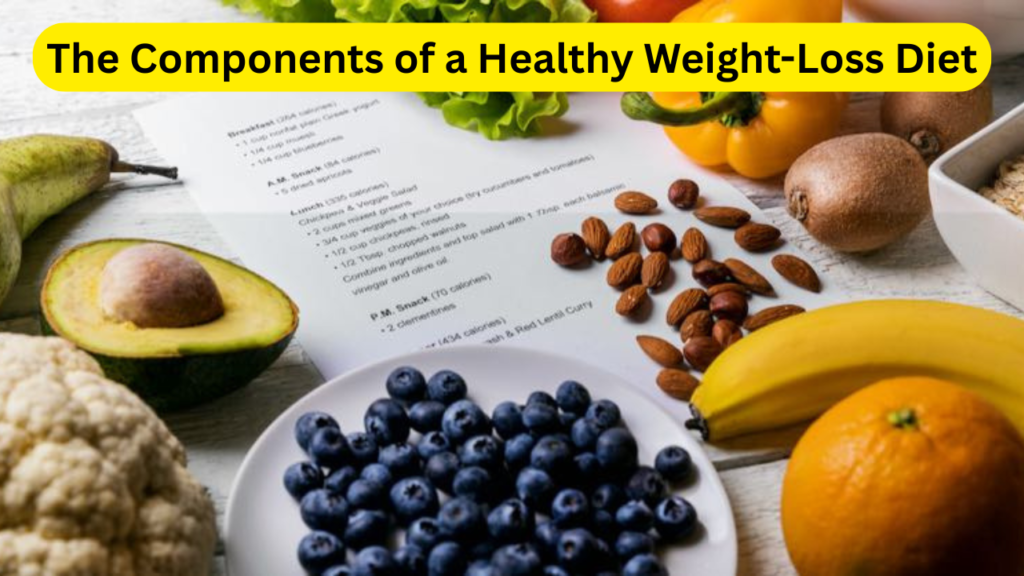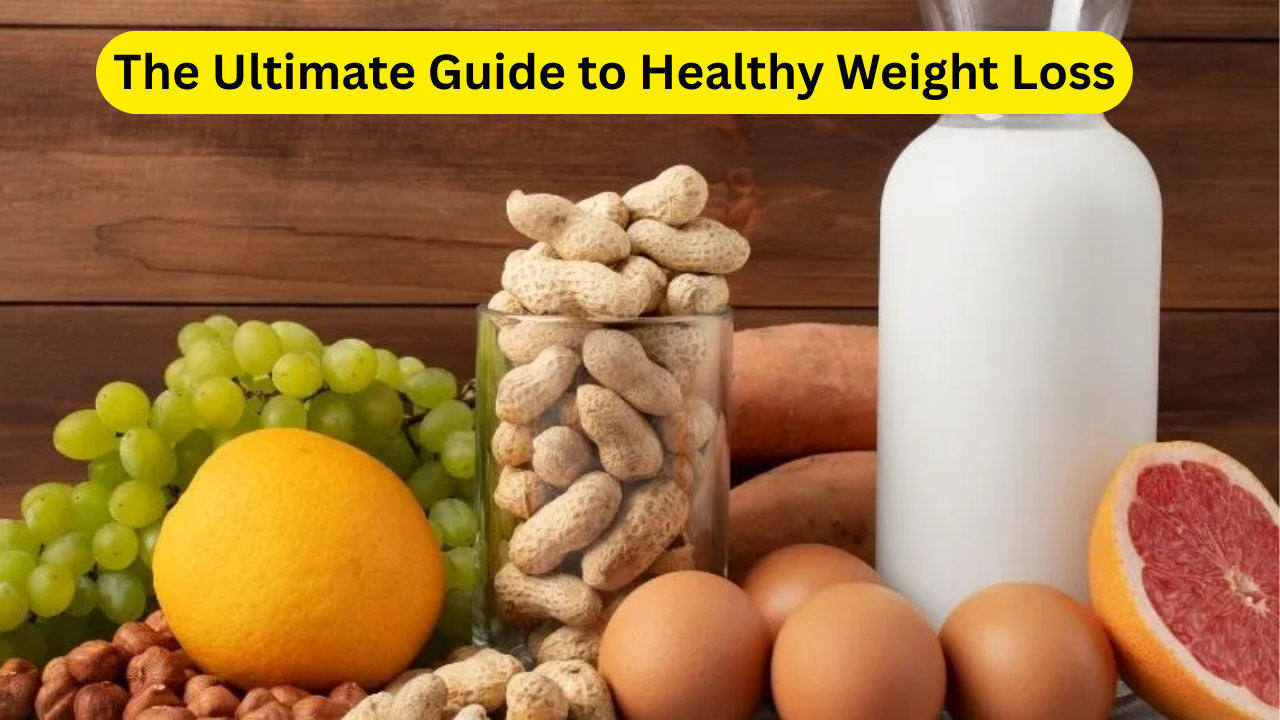The Ultimate Guide to Healthy Weight Loss: Losing weight can be a daunting task, especially with the overwhelming number of diet plans and weight-loss strategies available today. Many people struggle with calorie counting, restrictive diets, and unsustainable meal plans that leave them feeling deprived. However, Dr. Michael Greger, a leading physician specializing in clinical nutrition, proposes a revolutionary approach to weight loss that prioritizes food quality over quantity. His book, How Not to Diet: The Groundbreaking Science of Healthy, Permanent Weight Loss, emphasizes a whole-food, plant-based diet that promotes healthy and sustainable weight loss without the need for strict portion control or calorie tracking.
Most traditional weight-loss methods focus on cutting calories and limiting food intake, but they often fail in the long run because they leave individuals feeling hungry and unsatisfied. Dr. Greger’s approach is different—it allows people to eat as much as they want while still achieving weight loss. By consuming a diet rich in fruits, vegetables, whole grains, legumes, nuts, and seeds, individuals can naturally reduce their calorie intake without feeling deprived. The key is to replace “CRAP” (Calorie-Rich And Processed) foods with nutrient-dense, fiber-rich alternatives that provide satiety and promote overall health.
Incorporating scientifically backed principles such as increasing fiber intake, consuming vinegar, practicing intermittent fasting, and focusing on “negative calorie” foods, Dr. Greger’s method offers a practical and effective way to shed excess weight. This article explores his diet recommendations, the science behind them, and how they can help individuals achieve long-term weight loss success.
Click here: Ardha Chakrasana for Weight Loss: Benefits, Steps, and Tips
The Science Behind Dr. Greger’s Weight Loss Approach
Why a Whole-Food, Plant-Based Diet Works
A whole-food, plant-based diet is naturally low in calorie density, meaning you can eat larger portions without consuming excessive calories. This diet is rich in fiber, which slows digestion, increases satiety, and promotes gut health. By minimizing meat, eggs, dairy, and processed junk foods, and instead focusing on plant-based sources of nutrition, individuals can optimize their metabolism and improve overall well-being.
The Role of Fiber in Weight Loss
Fiber is a crucial component of any successful weight-loss plan. It helps slow the absorption of sugar into the bloodstream, preventing insulin spikes that contribute to fat storage. High-fiber foods also expand in the stomach, creating a feeling of fullness that reduces overall calorie consumption. Sources of fiber-rich foods include:
- Whole grains (oats, quinoa, brown rice)
- Legumes (beans, lentils, chickpeas)
- Fruits (berries, apples, pears)
- Vegetables (broccoli, spinach, carrots)
- Nuts and seeds (flaxseeds, chia seeds, almonds)
The Components of a Healthy Weight-Loss Diet

1. Vinegar for Appetite Control and Metabolism Boost
Studies have shown that consuming vinegar before meals can help reduce appetite and improve insulin sensitivity. Acetic acid, the main component of vinegar, slows gastric emptying and helps stabilize blood sugar levels, leading to reduced cravings and better portion control.
2. Intermittent Fasting for Effective Fat Loss
Intermittent fasting (IF) is a powerful weight-loss strategy that involves cycling between periods of eating and fasting. Common IF methods include the 16:8 approach (fasting for 16 hours and eating within an 8-hour window) and alternate-day fasting. IF helps the body burn stored fat for energy, reduces insulin levels, and promotes cellular repair.
3. Negative-Calorie Foods for Natural Weight Management
Negative-calorie foods require more energy to digest than the calories they provide. While no food technically has “negative” calories, certain low-calorie, high-fiber foods can contribute to weight loss by increasing metabolic activity. Examples include:
- Celery
- Cucumber
- Leafy greens (kale, spinach, lettuce)
- Tomatoes
- Berries
4. Hydration and its Role in Weight Loss
Drinking plenty of water helps boost metabolism, reduce hunger, and enhance digestion. Consuming water-rich foods like watermelon, oranges, and cucumbers further contributes to hydration and fullness.
Also read: Maruti Suzuki Jimny Ownership Experience: 15,000 km Milestone Review
The Ultimate Guide to Healthy Weight Loss Conclusion
Losing weight doesn’t have to involve restrictive diets or obsessive calorie counting. Dr. Michael Greger’s whole-food, plant-based approach offers a sustainable and scientifically backed method for achieving lasting weight loss. By focusing on fiber-rich foods, incorporating vinegar, practicing intermittent fasting, and eating negative-calorie foods, individuals can enhance their metabolism and maintain a healthy lifestyle.
Adopting this diet not only supports weight loss but also improves overall health. It reduces the risk of chronic diseases such as diabetes, heart disease, and obesity-related complications. Unlike fad diets that often lead to weight regain, this lifestyle change is sustainable and enjoyable.
Making gradual changes to your diet and lifestyle ensures long-term success. Instead of focusing on deprivation, prioritize nutrient-dense foods that nourish your body and keep you satisfied.
For those seeking a science-backed, realistic, and effective approach to weight loss, Dr. Greger’s recommendations provide the perfect blueprint. Embrace this method, enjoy the journey, and experience the benefits of a healthier, happier life.
The Ultimate Guide to Healthy Weight Loss FAQs
1. Can I eat as much as I want on a whole-food, plant-based diet?
Yes, the beauty of this diet is that it focuses on foods that are naturally low in calorie density. Since whole plant foods are rich in fiber and water content, they promote satiety without excessive calorie intake, allowing you to eat until you’re full while still losing weight.
2. How does intermittent fasting help with weight loss?
Intermittent fasting promotes weight loss by reducing insulin levels, increasing fat burning, and improving metabolic health. It helps control hunger hormones, enhances calorie expenditure, and supports overall weight management.
3. What are some easy ways to incorporate vinegar into my diet?
You can add apple cider vinegar to salad dressings, dilute it in water and drink it before meals, or use it as a flavor enhancer in soups and stir-fries. It helps control appetite, stabilizes blood sugar, and improves digestion.
4. Are negative-calorie foods a real thing?
While no food has truly negative calories, certain high-fiber, low-calorie foods require more energy for digestion than they provide. Eating foods like celery, leafy greens, and cucumbers can contribute to weight loss by keeping you full while requiring additional energy expenditure.
5. How long does it take to see results with this diet?
Results vary based on individual factors such as metabolism, activity level, and adherence to the diet. Many people notice improved digestion, increased energy, and gradual weight loss within a few weeks. For sustainable results, consistency is key.









